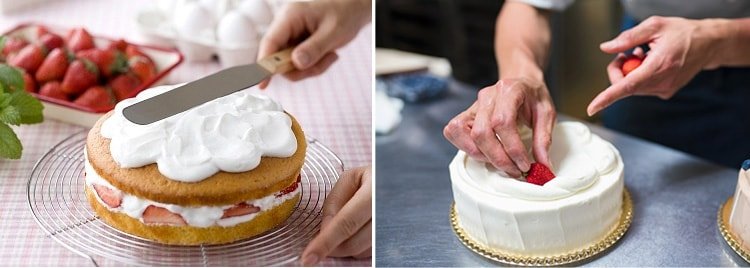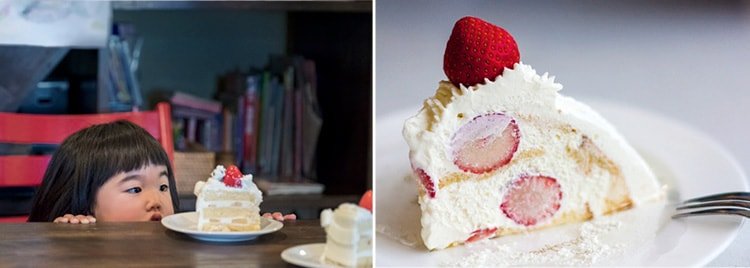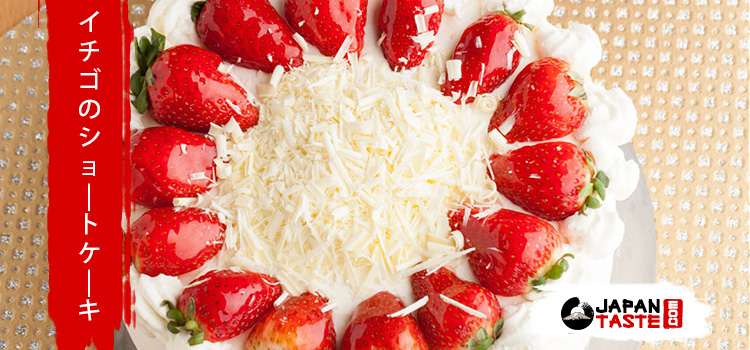For the holidays and especially for Christmas, Japanese people enjoy a Japanese strawberry dessert called ichigo no shotokeki, presentation :
- ichigo no shotokeki, the Japanese strawberry plant:
- A Japanese strawberry plant for the holidays and Christmas in Japan
ichigo no shotokeki, the Japanese strawberry plant:
 The Japanese strawberry, called ichigo no shotokeki イチゴのショートケーキ is much lighter in the mouth than that which we know in France. In fact, the Japanese strawberry cake is much simpler, using whipped cream instead of custard and a shortcake base (an airy, barely sweet sponge cake) soaked in syrup.
The Japanese strawberry, called ichigo no shotokeki イチゴのショートケーキ is much lighter in the mouth than that which we know in France. In fact, the Japanese strawberry cake is much simpler, using whipped cream instead of custard and a shortcake base (an airy, barely sweet sponge cake) soaked in syrup.
Inside are a few pieces of strawberries and cream. You can find it in 2 layers inside.

The cake is brushed with whipped cream. We finish the decoration with some strawberries. This is one of the most popular and classic cakes in Japan.
Light, airy and barely sweet, it is a delight! Discover our recipe for this easy and delicious Japanese strawberry cake
.
A Japanese strawberry dish for the holidays and Christmas in Japan

It should be known that this cake was born in the 1920s thanks to a Japanese pastry chef Fujii Rin’Emmon discovering a strawberry shortcake in the United States. The American version was composed of 2 shortcakes stacked like a burger with cream and strawberries.
He adapted this cake to this Japanese strawberry shortcake by replacing it with a softer, more airy and less sweet cake base that meets the requirements of Japanese palates. He also surrounded the cake with cream, visually more sober and greedy.
Success is guaranteed around 1955 (30 years later) because the refrigerator starts to be well established in Japanese homes.

It is important to know that strawberry is a luxury product in Japan, that’s why it is an occasional cake, for parties. Moreover, strawberries grow and are harvested in winter in Japan, perfect for Christmas. However, you can find them all year round.
On the island of Kyushu, there is a very juicy variety of strawberry called Amaou. Japanese people love the taste of strawberry, it is also found in many Japanese desserts such as daifuku, cheesecakes, mochi, Kit Kat…





